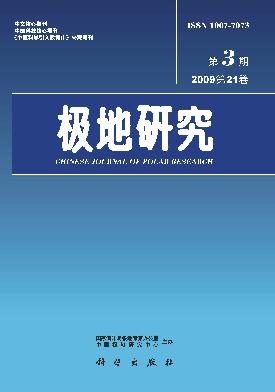Combining with the research results obtained from the Great Wall and Zhongshan Stations of China, the thesis reviews the different ice algal assemblages occurring in the Antarctic sea ice and their formation, survival, growth and disappearance, compares the difference between the pack and fast sea ice zones and brings forward some scientific questions which are needed for further research. There are surface, interior, bottom and sub ice assemblages within ice, and each composes of some types. Because of their different physical characteristics, the surface and interior assemblages are important in the pack ice whereas the bottom and sub ice assemblages are more important in the fast ice. There are typical fast ice algal assemblages in the fast ice zone near Zhongshan Station, but with its relatively lower latitude and more favorable environment, the fast ice near the Great Wall Station has some characteristics similar with those of pack ice. There are several mechanisms of phytoplankton incorporated into new ice, including the active movement of some algal species like pennate diatoms. Frazil ice can collect phytoplankton in the upper water column and cause high biomass within new ice in the pack ice zone, but the autumn ice algal bloom in the bottom of the fast ice occurs through the short period growth. The activities are lower during the winter. In spring the ice algae may act as "seeds" in the ice edge depending on the ice algal community structure, environmental factors and grazing pressure within the upper water column. But in the fast ice zone, ice algae trend to sink quickly to the sea floor. Many studies have been done about the ice algal assemblages, but the studies on the ice algal assemblages in winter pack ice are still few. Furthermore, the influence of global change on ice algal assemblages should be paid much attention to in the further.

